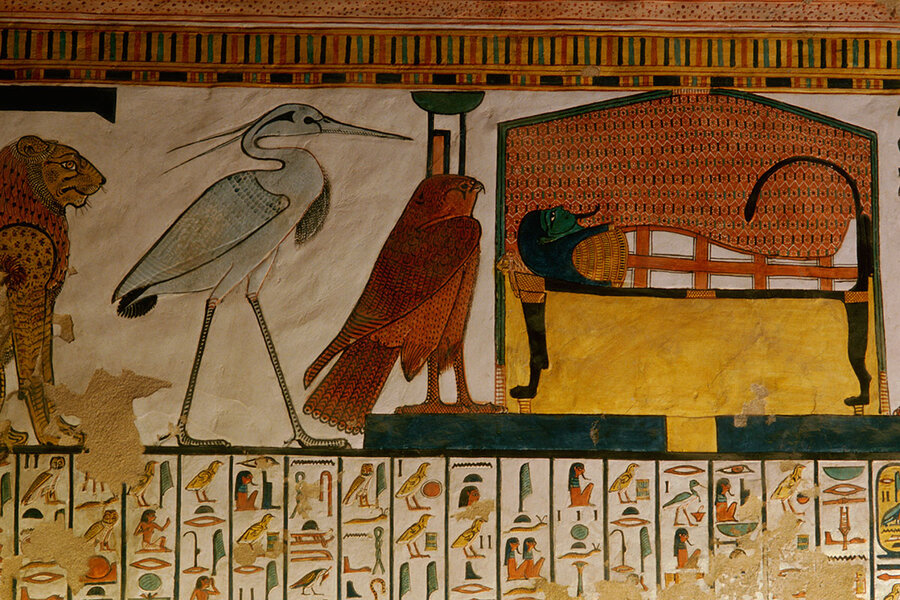Why the Rosetta stone initially stumped linguists
Loading...
When a soldier in Napoleon’s army discovered the Rosetta stone in a pile of rubble in Egypt in 1799, hopes soared that the linguistic puzzle of the ages – the meaning of the hieroglyphs – might finally be solved.
In “The Writing of the Gods: The Race To Decode the Rosetta Stone,” Edward Dolnick tells the fascinating story of one of the world’s most famous objects and the 20-year odyssey to unravel its mysteries.
The Rosetta stone was a 4-by-3-foot slab of granite on which were found three sets of inscriptions: Egyptian hieroglyphs, ancient Greek, and Coptic. If the writings were translations of the same information, then the latter scripts could provide an invaluable toehold into the Egyptian symbols.
The difficulties of attempting to decipher the hieroglyphs, even with the help of the Rosetta stone, were legion. Code breakers needed reams of text in order to distinguish patterns, but the Rosetta stone, because it is broken at the top, contains only 14 lines of hieroglyphs. Many more examples would be needed.
Then, too, the assumption that the three scripts were word-for-word translations of one another proved to be false. Though they align in a loose way, Dolnick likens them to “three peoples’ summaries of the same movie.” Not knowing this, the early decipherers “found themselves lost inside a maze.”
Hieroglyphs had been objects of fascination since the fourth century, studied endlessly and imbued with reverence. They were regarded by linguists and historians as a mystical and supreme form of writing, which stood for ideas and not mere letters or sounds. Scholars presumed that the strange and beautiful symbols had a higher purpose, that “every hieroglyphic text was a meditation on the nature of time and space.”
The early translators of the Rosetta stone threw themselves into the task of rendering the nearly intact Greek inscription, hoping to find grand ideas expressed, something along the lines of the Magna Carta or the Bill of Rights. Instead they found a mundane message, filled with tributes to the pharaoh, including a litany of his good deeds.
Before the discovery of the Rosetta stone, some of the most accomplished linguists in Europe had attempted to decode hieroglyphs. Studying the stone brought some insights, but little real progress was made. By 1814, virtually everyone had given up, opening the field to outsiders, including two brilliant rivals who are the heroes of this tale.
Thomas Young and Jean-François Champollion shared a gift for languages, although they were different in every other way. Young was an English polymath who made contributions to a wide range of fields, including music, physiology, medicine, and linguistics. Champollion, a French scholar 17 years Young’s junior, “was utterly single-minded, unwilling to focus his gaze on any topic but Egypt.” Though it was Champollion who, by 1822, was the first to be able to “read” the hieroglyphs, it was breakthroughs made previously by Young that made Champollion’s success possible.
Dolnick, a former science writer for The Boston Globe, is the author of numerous books on scientific subjects written for a general audience. His clear and engaging style makes accessible the complex science and art of decoding. He does a masterful job of guiding the reader through the labyrinth of false starts, wrong turns, and dead ends that prefaced a fuller understanding of the symbols.
Along the way, the reader is treated to brief, illuminating excursions into related subjects, such as Napoleon’s invasion of Egypt, the development of written language, Roman Emperor Constantine’s conversion to Christianity, and the continuing allure of ancient Egypt.
“The Writing of the Gods” is an engrossing account of one of the greatest breakthroughs in archaeological history, one that brought a dead language, and a buried culture, back to life.







